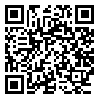Sat, Nov 22, 2025
[Archive]
Volume 10, Issue 4 (November 2023)
IJML 2023, 10(4): 314-321 |
Back to browse issues page
Download citation:
BibTeX | RIS | EndNote | Medlars | ProCite | Reference Manager | RefWorks
Send citation to:



BibTeX | RIS | EndNote | Medlars | ProCite | Reference Manager | RefWorks
Send citation to:
Eslami N, Anzabi Y, NourAzar M A. Comparison of the Effect of Temperature and Different Culture Media on the Possibility of Growth of Salmonella Typhimurium (ATCC: 14028). IJML 2023; 10 (4) :314-321
URL: http://ijml.ssu.ac.ir/article-1-485-en.html
URL: http://ijml.ssu.ac.ir/article-1-485-en.html
Department of Pathobiology, Faculty of Veterinary Medicine, Tabriz Medical Sciences, Tabriz Islamic Azad University, Tabriz, Iran.
Abstract: (732 Views)
Background and Aims: Gastrointestinal infection with Salmonella serotypes, especially Typhimurium, is common worldwide. One of the important points regarding the isolation of Salmonella is its similarity with other microbial flora, which makes it difficult to isolate it. Therefore, it is very important to choose the correct separation method. This study aimed to compare the growth rate of Salmonella in different cultural environments and the effect of temperature and enrichment on it.
Materials and Methods: 24 out of 36 Ross breed broilers were infected with the bacteria to obtain stool samples containing Salmonella Typhimurium. One McFarland dilution was given to chickens for experimental infection. After the confirmation of the infection, the culture was started in days for 7 consecutive days. From 2 media enriched with Tetrathionate broth and Selenite Cysteine broth and 3 selective culture media, Xylose lysine Deoxycholate agar, Brilliant Green agar, and McConkey agar for culture were used. All cultures were examined at 2 temperatures of 37°C and 42°C in terms of growth rate. The Kappa test was used for data analysis.
Results: The results showed no difference between tetrathionate and selenite cyane enrichment media (k=0.81). Agreement between Xylose Lysine Deoxycholate and McConkey (k=0.33), agreement between Xylose Lysine Deoxycholate and Brilliant Green (k=0.57), and agreement between Brilliant Green and McConkey (k=0.80), were obtained. The agreement between 37°C and 43°C was < 0.1.
Conclusion: According to the results obtained, using an Xylose Lysine Deoxycholate culture medium and incubation at 42°C are recommended to isolate Salmonella Typhimurium from fecal samples.
Materials and Methods: 24 out of 36 Ross breed broilers were infected with the bacteria to obtain stool samples containing Salmonella Typhimurium. One McFarland dilution was given to chickens for experimental infection. After the confirmation of the infection, the culture was started in days for 7 consecutive days. From 2 media enriched with Tetrathionate broth and Selenite Cysteine broth and 3 selective culture media, Xylose lysine Deoxycholate agar, Brilliant Green agar, and McConkey agar for culture were used. All cultures were examined at 2 temperatures of 37°C and 42°C in terms of growth rate. The Kappa test was used for data analysis.
Results: The results showed no difference between tetrathionate and selenite cyane enrichment media (k=0.81). Agreement between Xylose Lysine Deoxycholate and McConkey (k=0.33), agreement between Xylose Lysine Deoxycholate and Brilliant Green (k=0.57), and agreement between Brilliant Green and McConkey (k=0.80), were obtained. The agreement between 37°C and 43°C was < 0.1.
Conclusion: According to the results obtained, using an Xylose Lysine Deoxycholate culture medium and incubation at 42°C are recommended to isolate Salmonella Typhimurium from fecal samples.
Type of Study: Research |
Subject:
Bactriology
Received: 2023/05/2 | Accepted: 2023/11/29 | Published: 2023/12/1
Received: 2023/05/2 | Accepted: 2023/11/29 | Published: 2023/12/1
Send email to the article author
| Rights and permissions | |
 |
This work is licensed under a Creative Commons Attribution-NonCommercial 4.0 International License. |







